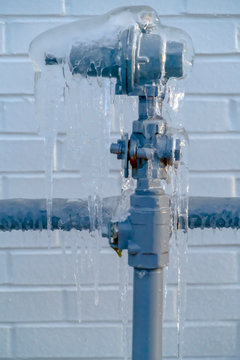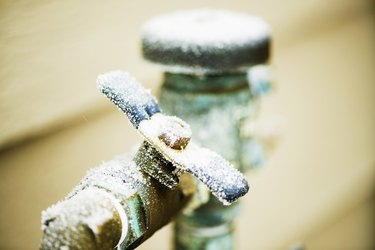Ways to Maintain Your Pipes from Cold Weather Damage: Crucial Tips
Ways to Maintain Your Pipes from Cold Weather Damage: Crucial Tips
Blog Article
What are your ideas with regards to How to Prevent Your Pipes From Freezing?

Cold weather can ruin your pipes, specifically by freezing pipes. Right here's just how to prevent it from occurring and what to do if it does.
Intro
As temperatures drop, the risk of frozen pipes rises, potentially resulting in costly repairs and water damages. Understanding just how to stop icy pipelines is important for home owners in cool environments.
Comprehending Icy Pipes
What creates pipelines to freeze?
Pipes ice up when revealed to temperatures below 32 ° F (0 ° C) for prolonged periods. As water inside the pipes freezes, it increases, taxing the pipe walls and possibly causing them to break.
Threats and damages
Icy pipelines can result in supply of water disturbances, residential property damages, and expensive repairs. Burst pipes can flood homes and trigger considerable architectural damages.
Signs of Frozen Pipes
Identifying frozen pipes early can prevent them from bursting.
How to identify icy pipes
Try to find lowered water flow from taps, uncommon odors or noises from pipes, and noticeable frost on revealed pipelines.
Prevention Tips
Insulating prone pipelines
Cover pipes in insulation sleeves or make use of warm tape to safeguard them from freezing temperatures. Focus on pipes in unheated or external areas of the home.
Heating techniques
Keep interior rooms properly warmed, particularly areas with plumbing. Open up cabinet doors to permit warm air to distribute around pipelines under sinks.
Securing Exterior Plumbing
Garden tubes and outside faucets
Detach and drain garden hoses prior to wintertime. Set up frost-proof spigots or cover exterior faucets with insulated caps.
What to Do If Your Pipelines Freeze
Immediate actions to take
If you believe frozen pipes, maintain faucets open to eliminate stress as the ice thaws. Make use of a hairdryer or towels soaked in warm water to thaw pipes gradually.
Long-Term Solutions
Architectural adjustments
Take into consideration rerouting pipelines away from outside wall surfaces or unheated locations. Add added insulation to attic rooms, cellars, and crawl spaces.
Updating insulation
Invest in high-grade insulation for pipelines, attics, and walls. Appropriate insulation helps maintain constant temperature levels and lowers the risk of frozen pipelines.
Final thought
Protecting against icy pipes requires proactive steps and quick actions. By understanding the reasons, indications, and preventive measures, home owners can secure their plumbing throughout cold weather.
5 Ways to Prevent Frozen Pipes
Drain Outdoor Faucets and Disconnect Hoses
First, close the shut-off valve that controls the flow of water in the pipe to your outdoor faucet. Then, head outside to disconnect and drain your hose and open the outdoor faucet to allow the water to completely drain out of the line. Turn off the faucet when done. Finally, head back to the shut-off valve and drain the remaining water inside the pipe into a bucket or container. Additionally, if you have a home irrigation system, you should consider hiring an expert to clear the system of water each year.
Insulate Pipes
One of the best and most cost-effective methods for preventing frozen water pipes is to wrap your pipes with insulation. This is especially important for areas in your home that aren’t exposed to heat, such as an attic. We suggest using foam sleeves, which can typically be found at your local hardware store.
Keep Heat Running at 65
Your pipes are located inside your walls, and the temperature there is much colder than the rest of the house. To prevent your pipes from freezing, The Insurance Information Institute suggests that you keep your home heated to at least 65 degrees, even when traveling. You may want to invest in smart devices that can keep an eye on the temperature in your home while you’re away.
Leave Water Dripping
Moving water — even a small trickle — can prevent ice from forming inside your pipes. When freezing temps are imminent, start a drip of water from all faucets that serve exposed pipes. Leaving a few faucets running will also help relieve pressure inside the pipes and help prevent a rupture if the water inside freezes.
Open Cupboard Doors
Warm your kitchen and bathroom pipes by opening cupboards and vanities. You should also leave your interior doors ajar to help warm air circulate evenly throughout your home.

I'm just very curious about 6 Ways to Prevent Frozen Pipes and I hope you enjoyed reading the entire page. Make sure you set aside a second to promote this blog post if you liked it. We recognize the value of your readership.
Suggested Site Report this page